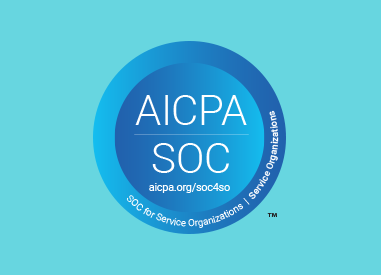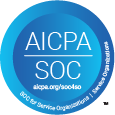By: Megan Paauwe, MBA-HM
The Impact of Physician Burnout
Physician burnout is an increasingly common phenomenon in the U.S. healthcare industry. According to the American Medical Association (AMA), recent studies show a national burnout rate of more than 50% among physicians in practice. Burnout is caused by a variety of factors, including increased administrative burden, long hours spent charting and documentation, and interference from insurance companies, administration, and government regulations. The impact of physician burnout is far-reaching and can have serious consequences for health systems. Not only does physician burnout lead to increased costs for healthcare organizations, but it also has a negative effect on patient care and satisfaction. Physicians who are burned out may be more likely to make mistakes or provide subpar care due to fatigue and stress. Furthermore, the emotional toll that burnout takes on physicians can lead to long-term psychological issues that are difficult to overcome. Many of these effects grew worse in recent years due to the additional strain placed on physicians and healthcare systems by the COVID-19 pandemic. It is important for healthcare organizations to recognize the signs of physician burnout and to take steps to reduce its prevalence among their staff members. By creating supportive environments where physicians feel valued and appreciated, health systems can help reduce the risk of burnout.
Identifying the Causes of Physician Burnout
While there are many factors that contribute to physician burnout, its often associated with system inefficiencies, administrative burdens, and increased regulation and technology requirements. Other contributing factors include long work hours, lack of support from colleagues or supervisors, and high levels of stress. According to the AMA, many physicians report feeling that they have little control over their work conditions while experiencing immense time pressure in a workplace that often feels chaotic. Physicians also report that they frequently encounter interactions with leaders and administration where they sense a lack of alignment of values around mission and purpose. The frustration from these experiences is often overwhelming and can lead physicians to be more defensive in their interactions with administration.
Symptoms of Burnout
Physicians experience burnout in multiple ways, but some of the most common are physical symptoms such as fatigue, insomnia, anxiety, and depression. Some physicians seek help from colleagues or supervisors while others may feel their only option is to leave the practice. The symptoms of burnout look like the following:
-Depersonalization and emotional withdrawal from work; being emotionally detached from patients, co-workers and loved ones.
-Prolonged stress levels with negative impacts on lifestyle; significant reductions in sleep quality and quantity, long periods of fatigue or exhaustion, increased alcohol use, increased cigarette use.
-Distraction from other responsibilities such as housework or family commitments; decreased interest in work outside of the workplace.
-Feeling guilty for not doing more at work when feeling affected by burnout
-Other symptoms of burnout include a decreased interest in their practice, impaired judgment, and a reduced ability to provide care.
The major risk factors for burnout in physicians include physician demographics (e.g., age) and the type of specialty. Physicians who are female, non-white, less educated, and younger are at a higher risk of experiencing symptoms of burnout. Additionally, certain types of specialties have an increased risk for burnout including emergency medicine, psychiatry, and medical oncology. Recognizing the symptoms of burnout are important to take measures to help prevent future instances.
Alleviating Physician Burnout
Many proactive healthcare organizations are taking steps to identify and counteract the effects of physician burnout. Research has shown that the following measures are effective at preventing physician burnout: A study by McGlynn et al. found that burnout was reduced by a significant percentage in physicians whose employers provided them with sick leave time and/or social support. Yoav Lerer et al. found that the effect of a professional intervention on physician burnout was significantly greater when the intervention provider or practice was formally contracted with the hospital or clinic than when it was not, which suggests that healthcare providers should contract with outside organizations to reduce work-life conflict for providers. Many facilities have instituted Physician Wellness Committees, and some have begun offering mindfulness training to help physicians minimize stress and stay healthy during their time off from patient care.
Administrative Burden and Credentialing
Another opportunity for preventing physician burnout is reducing administrative burdens, up to and including the credentialing and privileging process. A number of studies have demonstrated that administrative burden may contribute to physician burnout. Specifically, some studies have found that physicians who had a more difficult credentialing process were at higher risk of experiencing burnout. One recent study suggests that a greater percentage of physicians are interested in electronic credentialing as it can reduce the amount of time spent on paperwork and introduce accountability strategies to mitigate any potential risk associated with credentialing errors. Efforts to streamline and automate the credentialing process as much as possible are also associated with reduced administrative burdens on physicians. Reducing the amount of time that physicians spend related to credentialing and privileging will increase the amount of time they can spend focused on patient care. Studies have shown that hospitals with higher physician satisfaction ratings are more likely to experience lower rates of patient dissatisfaction and negative patient outcomes.
Acorn Credentialing Solutions
With Acorn Credentialing’s streamlined and automated platform, physicians experience reduced frustration and increased satisfaction. With Acorn, physicians can upload and access their professional data, documents, and forms from a secure, centralized, permanent database. They can also generate CVs and transcripts, enrollment and credentialing forms, and applications in a single click. With automated tasks, streamlined digital workflows, and advanced data management, the Acorn platform gives healthcare organizations the power to respond quickly, adapt easily, and provide better care to more people. Discover how simple we make it to improve credentialing workflows for better outcomes. Visit www.acorncredentialing.com to learn more, and book a demo to see what our credentialing experts can do for you!





